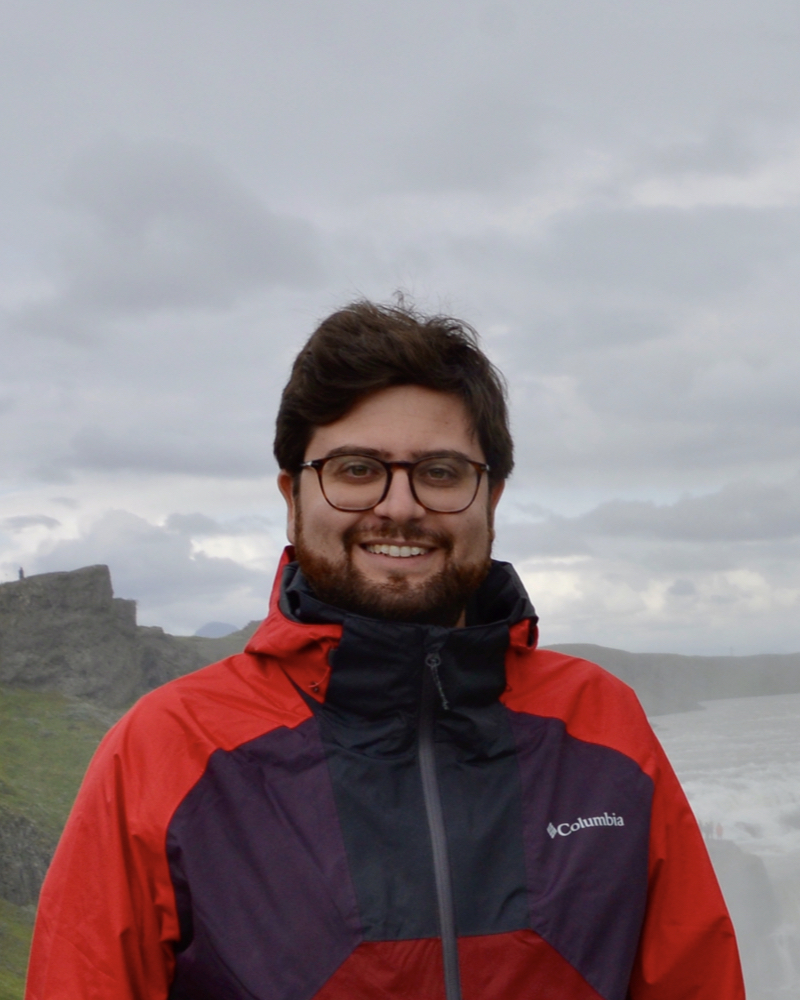
Marco Chianese
Ricercatore in tenure track
- GSD 02/PHYS-02; SSD PHYS- 02/A
- m.chianese@ssmeridionale.it
- Via Mezzocannone, n.4-80134 (NA)
- Area Interdisciplinare Scientifico-Tecnologica
Bio
I am a theoretical astroparticle physicist whose career has spanned several institutions. I earned the Ph.D. in Theoretical Physics from the University Federico II in my hometown Napoli in 2018. I then conducted postdoctoral research at the University of Southampton (2017-2018) and at the GRAPPA Center of Excellence in Gravitation and Astroparticle Physics in Amsterdam (2018-2020). Before joining SSM, I was a researcher at the University Federico II from 2020 to 2024.
Ricerca
My research program focuses on theoretical and phenomenological studies in astroparticle physics, astrophysics, and cosmology. The main goal of my work is to validate theoretical models with observational data from laboratory-based experiments and high-energy astrophysical telescopes. This approach aims to provide deeper insights into some of the Universe’s most profound mysteries: the elusive nature of dark matter, the origin of high-energy astrophysical messengers, and the baryon asymmetry of the Universe. My investigations are not purely theoretical but also involves close collaboration with experimental groups, fostering a vibrant exchange of ideas and promoting innovative analyses. Over the years, I have established ongoing collaborations with the KM3NeT neutrino telescope (located beneath the Mediterranean Sea), the Large High Altitude Air Shower Observatory (LHAASO) in China, and the Southern Wide-field Gamma-ray Observatory (SWGO).
One of the key areas of my research involves exploring the fundamental nature of dark matter across a broad spectrum of scales, ranging from very light dark particles and Weakly Interacting Massive Particles (WIMPs) to macroscopic dark matter candidates like primordial black holes. My work primarily relies on indirect detection methods, particularly leveraging a multi-messenger approach that integrates data from a variety of astrophysical messengers, including cosmic rays, photons, neutrinos, and gravitational waves.
Another significant aspect of my research is the study of the origin and propagation of cosmic rays, gamma rays and neutrinos, particularly those detected at high and ultra-high energies. Understanding their behavior can reveal valuable insights into high-energy astrophysical processes occurring in extreme cosmic environments. Among the astrophysical messengers, high-energy neutrinos play a crucial role due to their ability to escape dense astrophysical sources and reach us almost unperturbed.
In addition to my work on dark matter and high-energy astrophysics, my research largely explores Beyond-the-Standard-Model (BSM) physics, investigating the potential existence of new particles and interactions that extend beyond the well-established Standard Model of particle physics. This includes examining the properties of neutrinos and their potential connection to dark matter and other cosmological phenomena. The neutrino sector is indeed pivotal at different epochs of the Universe. For instance, it may be linked to the production of dark matter and the generation of the baryon asymmetry of the Universe through baryogenesis via leptogenesis. My recent work also focuses on the stochastic gravitational wave background, which could be generated or influenced by BSM physics that may otherwise remain hidden.
Pubblicazioni
The full list of my publications can be found on inSPIRE. Some featured publications are:
- M. Chianese, S. Datta, G. Miele, R. Samanta and N. Saviano, Probing flavored regimes of leptogenesis with gravitational waves from cosmic strings, Phys. Rev. D (2025) [arXiv:2406.01231].
- A. Ambrosone, M. Chianese, D.F.G. Fiorillo, A. Marinelli and G. Miele, Starburst Galactic Nuclei as Light Dark Matter Laboratories, Phys. Rev. Lett. 131 (2023) [arXiv:2210.05685].
- LHAASO Collaboration, S. Ando, M. Chianese, D.F.G. Fiorillo, G. Miele and K.C.Y. Ng, Constraints on Heavy Decaying Dark Matter from 570 Days of LHAASO Observations, Phys. Rev. Lett. 129 (2022) [arXiv:2210.15989].
- R. Calabrese, M. Chianese, D.F.G. Fiorillo and N. Saviano, Direct Detection of Light Dark Matter from Evaporating Primordial Black Holes, Phys. Rev. D 195 (2022) [arXiv:2107.13001].
- A. Ambrosone, M. Chianese, D.F.G. Fiorillo, A. Marinelli, G. Miele and O. Pisanti, Starburst galaxies strike back: a multi-messenger analysis with Fermi-LAT and IceCube data, Mon. Not. Roy. Astron. Soc. 503 (2021) [arXiv:2011.02483].
- T.D.P. Edwards, M. Chianese, B.J. Kavanagh, S.M. Nissanke and C. Weniger, Unique Multimessenger Signal of QCD Axion Dark Matter, Phys. Rev. Lett. 124 (2020) [arXiv:1905.04686].
- Chianese and S.F. King, The Dark Side of the Littlest Seesaw: freeze-in, the two right-handed neutrino portal and leptogenesis-friendly fimpzillas, JCAP 09 (2018) [arXiv:1806.10606].
- S.M. Boucenna, M. Chianese, G. Mangano, G. Miele, S. Morisi, O. Pisanti and E. Vitagliano, Decaying Leptophilic Dark Matter at IceCube, JCAP 12 (2015) [arXiv:1507.01000].
Corsi
2024 – 2025
Introduction to Astroparticle Physics (SPACE PhD program)
2023 – 2024
Introduction to Quantum Mechanics (SPACE PhD program)
News
